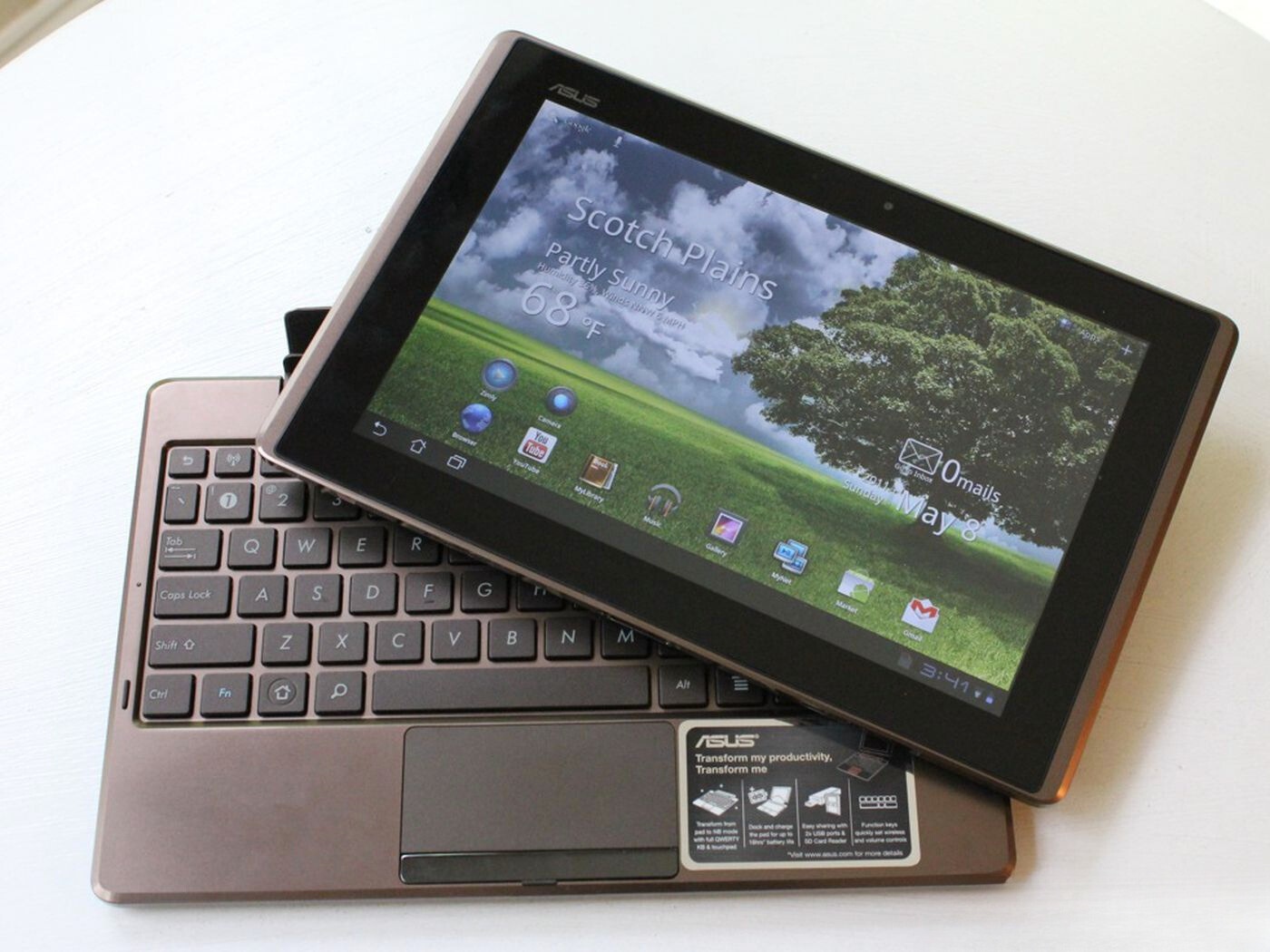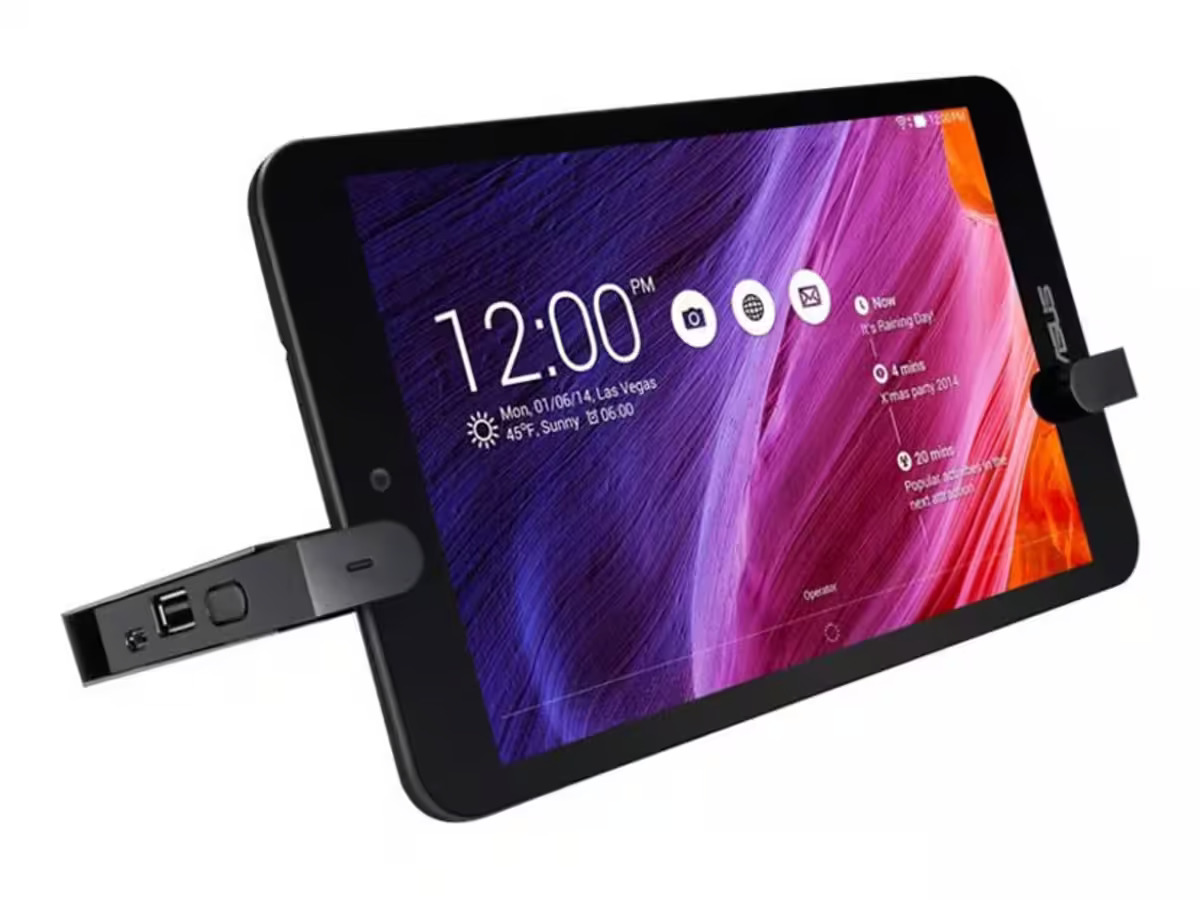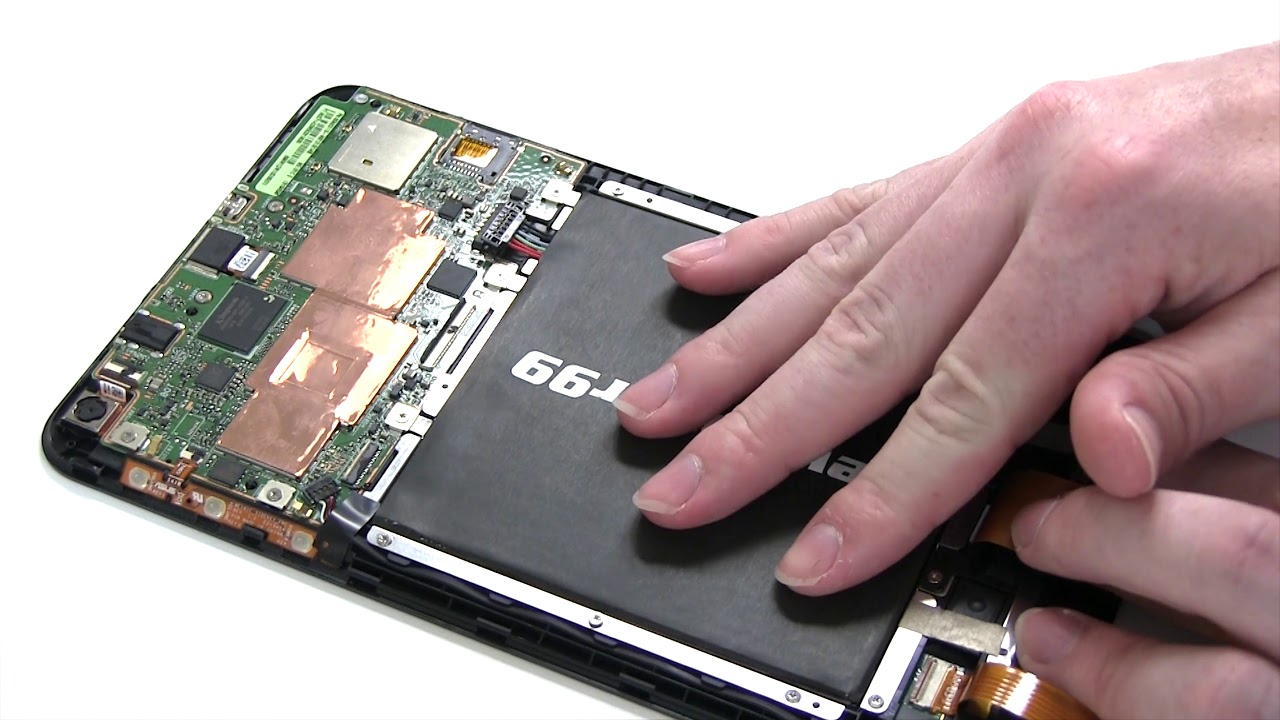Introduction
Welcome to the world of technology! With the advancements in mobile devices, tablets have become an integral part of our lives. One of the leading tablet brands, Asus, offers a wide range of devices that are reliable and feature-packed. However, like any other electronic device, Asus tablets can sometimes encounter unforeseen issues.
One common issue faced by Asus tablet users is getting stuck in Safe Mode. This can be frustrating as it restricts the device’s functionality and limits access to certain applications and features. But fret not, as we are here to help you resolve this problem and get your Asus tablet out of Safe Mode.
Safe Mode is a diagnostic mode that allows limited functionality of the tablet by disabling third-party applications. It is useful in troubleshooting issues caused by problematic apps or software conflicts. While it is designed to be a temporary mode, sometimes the tablet can get stuck in Safe Mode, preventing users from fully utilizing its features.
There can be various reasons why your Asus tablet is stuck in Safe Mode. It could be due to a recent software update, a malfunctioning app, or even a glitch in the system. Identifying Safe Mode on your Asus tablet is crucial in order to apply the appropriate troubleshooting steps.
In the following sections, we will guide you through different methods to help you identify Safe Mode on your Asus tablet and, most importantly, how to get your tablet out of Safe Mode. Whether you are a tech-savvy user or someone who is new to the world of tablets, we have methods suited for all levels of expertise.
What is Safe Mode?
Safe Mode is a diagnostic mode that allows you to troubleshoot issues on your Asus tablet by running the device with a limited set of features and disabling third-party applications. It is a handy tool for identifying and resolving problems caused by software conflicts, malfunctioning apps, or other software-related issues.
When your Asus tablet is in Safe Mode, only essential system processes and preloaded applications are allowed to run. This helps isolate problematic apps or software and gives you the opportunity to fix the issue without interference from other applications.
While in Safe Mode, you may notice that some features and functionalities of your tablet are temporarily disabled. This is because Safe Mode aims to provide a clean and stable environment for troubleshooting purposes. Certain settings, customization options, and third-party apps will not be available until you exit Safe Mode.
Safe Mode can be a valuable tool for resolving issues such as app crashes, freezing, and unusual behavior on your Asus tablet. By temporarily disabling third-party apps, you can determine if a particular app is causing the problem or if it is a more widespread issue with the device itself.
It is important to note that Safe Mode should only be used for troubleshooting purposes and not as a permanent operating mode. While in Safe Mode, certain features and apps will be limited, affecting the overall functionality of your tablet. Once you have identified and resolved the issue, you should exit Safe Mode to regain full access to your tablet’s capabilities.
Now that we have a better understanding of what Safe Mode is and its purpose, let’s move on to the reasons why your Asus tablet might be stuck in Safe Mode and how to identify it.
Reasons for Asus Tablet Stuck in Safe Mode
There can be several reasons why your Asus tablet is stuck in Safe Mode. Understanding these reasons can help you troubleshoot the issue effectively and prevent it from happening in the future. Here are some common causes:
1. Recent System Update: Oftentimes, after a system update, the tablet may automatically enter Safe Mode to ensure compatibility and stability. However, sometimes the tablet fails to exit Safe Mode even after the update is complete.
2. Malfunctioning App: If you have recently installed or updated an app that is causing conflicts with the system or other apps, your Asus tablet may get stuck in Safe Mode to prevent further issues.
3. Hardware or Software Glitch: Occasionally, a hardware or software glitch can trigger the tablet to enter Safe Mode. This can happen due to various reasons, such as a sudden power outage during a system operation or a software bug.
4. Battery Issue: If your tablet’s battery is critically low or malfunctioning, it may cause the device to start up in Safe Mode automatically as a power-saving measure.
5. Incorrect Button Press: Accidentally pressing specific combinations of physical buttons, such as the volume up/down or power button, during the boot-up process can lead to the tablet entering Safe Mode.
6. System Error: In some cases, a system error or crash can force the Asus tablet into Safe Mode as a protective measure to prevent further damage.
By identifying the cause of your tablet being stuck in Safe Mode, you can apply the appropriate troubleshooting methods to resolve the issue. In the next section, we will guide you on how to identify whether or not your Asus tablet is in Safe Mode.
How to Identify Safe Mode on Asus Tablet
Before you attempt to get your Asus tablet out of Safe Mode, it is important to confirm whether or not it is actually in Safe Mode. Here are a few ways to identify Safe Mode on your Asus tablet:
1. Check the Notification Panel: Swipe down from the top of the screen to access the notification panel. If your tablet is in Safe Mode, you may see a message or an icon indicating it. This could be a text displaying “Safe Mode” or an icon with the words “Safe Mode” or the letters “SM” on it.
2. Check the Power Menu: Press and hold the power button on your tablet until the power menu appears. If your tablet is in Safe Mode, you may see an option to exit or restart in Safe Mode.
3. Check the Settings Menu: Go to the Settings app on your Asus tablet and navigate to the “About” or “System” section. Look for any indication or mention of Safe Mode. Some Asus tablets may have a separate Safe Mode section in the settings menu.
4. Test App Functionality: While in Safe Mode, some features and apps may be limited or disabled. Try opening a third-party app or feature that you suspect might not work in Safe Mode. If it does not function properly or is inaccessible, it may indicate that your tablet is in Safe Mode.
5. Look for Visual Clues: In some cases, when your Asus tablet is in Safe Mode, the screen background or theme may appear different from the usual. It may have a default or simplified look compared to the personalized settings you had prior to entering Safe Mode.
By using these methods, you can easily identify whether your Asus tablet is in Safe Mode or not. Once you have confirmed that it is indeed in Safe Mode, you can proceed with the appropriate methods to exit Safe Mode, which we will discuss in the following sections.
Method 1: Restarting the Tablet
One of the simplest and most common methods to try when your Asus tablet is stuck in Safe Mode is to restart the device. Restarting can often resolve temporary glitches or software issues that may have caused the tablet to enter Safe Mode. Here’s how you can do it:
Step 1: Press and hold the power button on your tablet until the power menu appears.
Step 2: Tap on the “Restart” option. If you don’t see a restart option, look for “Reboot” or “Power off” and select that instead.
Step 3: Wait for your tablet to power off completely and then press the power button again to turn it back on.
Once the tablet restarts, it should boot up normally and hopefully exit Safe Mode. Check if you can access all the features and apps that were restricted in Safe Mode. If you no longer see any indication of Safe Mode and the tablet is functioning as usual, then it is out of Safe Mode.
If your tablet continues to boot up in Safe Mode after restarting, it indicates that the issue may be more persistent. In this case, you may need to try other methods to get your Asus tablet out of Safe Mode, which we will discuss in the subsequent sections.
Restarting the tablet is a quick and easy troubleshooting step that can often resolve minor software issues. It is recommended to give it a try before moving on to more advanced methods. If restarting doesn’t work, don’t worry—we have more solutions for you to try!
Method 2: Removing the Battery (if possible)
If you own an older model of an Asus tablet, it may have a removable battery. In certain cases, removing the battery can help in getting the tablet out of Safe Mode. However, please note that this method is only applicable if your tablet has a removable battery. Here’s how you can try this method:
Step 1: Turn off your Asus tablet by pressing and holding the power button for a few seconds.
Step 2: Check if your tablet has a removable back cover. If it does, carefully remove the back cover to gain access to the battery.
Step 3: Locate the battery inside your tablet. Gently remove the battery by disconnecting it from the device. Be cautious while handling the battery and avoid damaging it.
Step 4: Wait for a few minutes before reinserting the battery. This will allow any residual power to dissipate and ensure a clean restart.
Step 5: After the waiting period, reinsert the battery into the tablet carefully.
Step 6: Put the back cover back on your tablet ensuring it is securely in place.
Step 7: Press the power button to turn on your tablet. It should start up normally without entering Safe Mode.
If the issue causing your tablet to be stuck in Safe Mode was related to software or temporary glitches, removing and reinserting the battery can help reset the system and resolve the problem. However, it is important to note that newer models of Asus tablets usually have non-removable batteries. In such cases, it is recommended to skip this method and try other troubleshooting techniques instead.
If removing the battery does not work or is not possible with your tablet model, don’t worry. There are still other methods you can try to get your Asus tablet out of Safe Mode, which we will cover in the upcoming sections.
Method 3: Using the Power and Volume Buttons
Another effective method to exit Safe Mode on your Asus tablet is by using a combination of the power button and volume buttons. This method can help force a reboot or access the boot menu options, allowing you to exit Safe Mode. Here’s how you can try it:
Step 1: Press and hold the power button on your tablet until the power menu appears.
Step 2: Tap on the “Restart” option. If you don’t see a restart option, look for “Reboot” or “Power off” and select that instead.
Step 3: While the tablet is restarting, immediately press and hold the volume up or volume down button (or both) along with the power button.
Step 4: Continue holding the buttons until the Asus logo or a menu appears on the screen.
Step 5: Release the buttons once the logo or menu appears. This will indicate that you have successfully accessed the boot menu options.
Step 6: Use the volume buttons to navigate through the menu options. Look for an option that says “Exit Safe Mode” or “Restart in Normal Mode”. Highlight this option using the volume buttons.
Step 7: Press the power button to select the highlighted option. Your tablet will then reboot and should start up normally, outside of Safe Mode.
If this method works, your Asus tablet should no longer be stuck in Safe Mode, and you should have access to all the restricted features and apps. However, if this method does not succeed, don’t worry. There are still additional methods to try to get your tablet out of Safe Mode, which we will discuss in the following sections.
Using the power and volume buttons is a common method to access special boot options on Android devices. It provides an alternative way to exit Safe Mode and is worth a try in resolving the issue.
Method 4: Uninstalling Problematic Apps
If your Asus tablet is stuck in Safe Mode due to a problematic app, uninstalling that app can help resolve the issue. By removing the app causing the conflict, you can potentially exit Safe Mode and regain full functionality on your tablet. Here’s how you can uninstall problematic apps:
Step 1: Go to the Settings app on your Asus tablet.
Step 2: Navigate to the “Apps” or “Applications” section. The location of this section may vary depending on the model and Android version of your tablet.
Step 3: In the Apps section, you will see a list of all the apps installed on your tablet. Scroll through the list and look for any app that you suspect might be causing the issue or any recently installed app that might be conflicting with the system.
Step 4: Tap on the problematic app to open its settings page.
Step 5: On the app’s settings page, look for an option to “Uninstall” or “Remove” the app. Tap on this option.
Step 6: Confirm the uninstallation by tapping “OK” or “Confirm” when prompted.
Step 7: Repeat the steps for any other problematic apps that you have identified.
Once you have uninstalled the problematic app(s), restart your Asus tablet and check if it boots up normally outside of Safe Mode. If the issue was caused by the removed app, your tablet should exit Safe Mode, and you should have full access to all features and apps once again.
If uninstalling a specific app resolves the Safe Mode issue, it is advisable to avoid reinstalling that app in the future, or you can try reinstalling it after some time to see if the issue persists. It is also a good practice to always keep your apps up-to-date to minimize the likelihood of encountering compatibility or conflict issues.
If this method does not solve the problem or if you are unable to identify a specific app causing the issue, don’t worry. There are still additional methods to try in order to get your Asus tablet out of Safe Mode, which we will explore in the next section.
Method 5: Clearing Cache Partition
If your Asus tablet is stuck in Safe Mode and the previous methods haven’t resolved the issue, clearing the cache partition can be a helpful step to try. The cache partition stores temporary files and data that can sometimes become corrupted, causing various issues on the device. Clearing the cache partition can help in refreshing the system and potentially fix the problem. Here’s how you can clear the cache partition:
Step 1: Turn off your Asus tablet by pressing and holding the power button.
Step 2: Once the tablet is powered off, press and hold the volume up button and power button simultaneously. Keep holding both buttons until the Asus logo appears on the screen.
Step 3: When the Asus logo appears, release both buttons. This will bring you to the system recovery menu.
Step 4: In the recovery menu, use the volume buttons to navigate through the options. Look for an option that says “Wipe cache partition” or “Clear cache partition” and highlight it.
Step 5: Press the power button to select the highlighted option and confirm the action when prompted. This will begin the process of clearing the cache partition.
Step 6: Wait for the process to complete. This may take a few moments, and you may see some scrolling text on the screen indicating that the cache partition is being cleared.
Step 7: Once the process is finished, the recovery menu will reappear. Use the volume buttons to select the “Reboot system now” option and press the power button to confirm.
Your Asus tablet will now reboot, and hopefully, it will start up outside of Safe Mode. Clearing the cache partition removes temporary files and data that may have been causing conflicts or issues on your tablet. If the issue was related to a corrupted cache, this method can help resolve it and allow your device to function normally again.
If clearing the cache partition does not fix the issue, there are still more methods to try in order to get your Asus tablet out of Safe Mode, which we will discuss in the following section.
Method 6: Performing a Factory Reset
If all the previous methods have failed to get your Asus tablet out of Safe Mode, performing a factory reset may be the final solution. A factory reset will revert your tablet back to its original factory settings, removing all data and settings from the device. This method should only be used as a last resort, as it will erase all your personal data. Before proceeding with a factory reset, it’s important to back up any important files or data that you want to keep. Here’s how you can perform a factory reset:
Step 1: Go to the Settings app on your Asus tablet.
Step 2: Navigate to the “System” or “System & Updates” section.
Step 3: Look for an option called “Reset” or “Reset options”. Tap on it to proceed.
Step 4: You may see multiple reset options, such as “Factory data reset”, “Reset all settings”, or “Erase all data”. Select the option that performs a complete factory reset of your tablet.
Step 5: Read the warning message carefully, as it will inform you about the consequences of a factory reset. If you are sure that you want to proceed, confirm the action.
Step 6: Your tablet will initiate the factory reset process, which may take several minutes to complete. Do not interrupt the process or turn off your tablet during this time.
Step 7: Once the factory reset is complete, your tablet will reboot and start up as if it were brand new. You will need to go through the initial setup process, including connecting to a Wi-Fi network and signing in with your Google account.
Performing a factory reset can help resolve persistent issues that prevent your Asus tablet from exiting Safe Mode. However, it is important to note that this method will erase all your data, so make sure to back up any important files before proceeding.
If a factory reset does not resolve the issue or if you’re still experiencing problems with your tablet, it may be necessary to seek professional assistance or contact Asus customer support for further guidance.
Conclusion
Getting your Asus tablet stuck in Safe Mode can be frustrating, but with the right methods, you can resolve the issue and regain full access to your device’s features and apps. In this article, we have explored various methods to help you identify Safe Mode on your Asus tablet and provided step-by-step instructions to get your tablet out of Safe Mode.
We started by introducing Safe Mode and discussing its purpose as a diagnostic mode for troubleshooting. We then delved into the reasons why your Asus tablet may get stuck in Safe Mode, such as recent system updates, malfunctioning apps, hardware or software glitches, battery issues, incorrect button presses, and system errors.
We then explored different methods to identify Safe Mode on your Asus tablet, including checking the notification panel, power menu, settings menu, testing app functionality, and visual clues specific to Safe Mode.
For troubleshooting, we provided several methods you can follow, such as restarting the tablet, removing the battery (if possible), using the power and volume buttons, uninstalling problematic apps, clearing the cache partition, and performing a factory reset. Each method was explained in detail, with step-by-step instructions to guide you through the process.
It’s worth noting that not every method may work for every situation. The best approach depends on the specific cause of your tablet being stuck in Safe Mode. It’s recommended to start with the simpler methods, such as restarting the tablet or uninstalling problematic apps, before moving on to more advanced methods like clearing the cache partition or performing a factory reset.
Remember to always back up your important data before attempting any troubleshooting method that involves resetting or erasing your tablet’s data.
If, after trying all the methods, your Asus tablet is still stuck in Safe Mode or if you encounter any other issues, it is advisable to seek professional assistance or contact Asus customer support for further guidance.
We hope that this guide has been helpful in resolving the Safe Mode issue on your Asus tablet. By following the steps outlined in this article, you can successfully get your tablet out of Safe Mode and enjoy using all its features and functionalities once again.

























